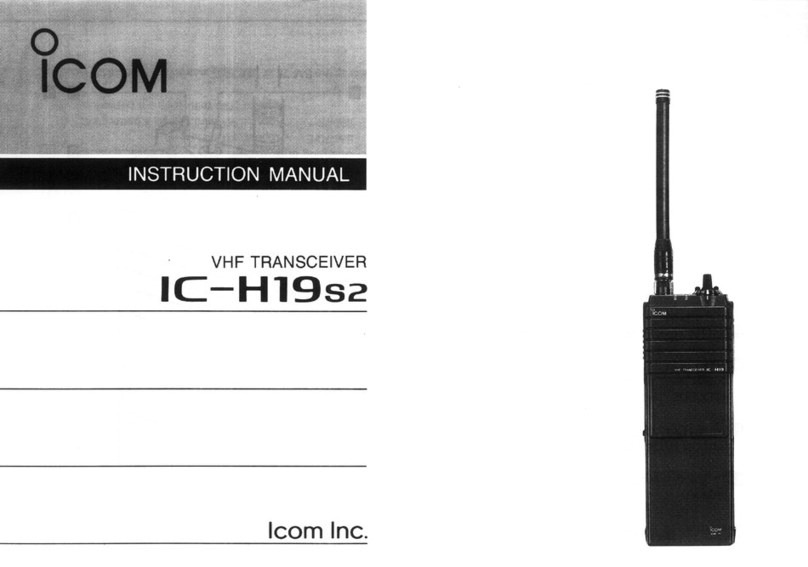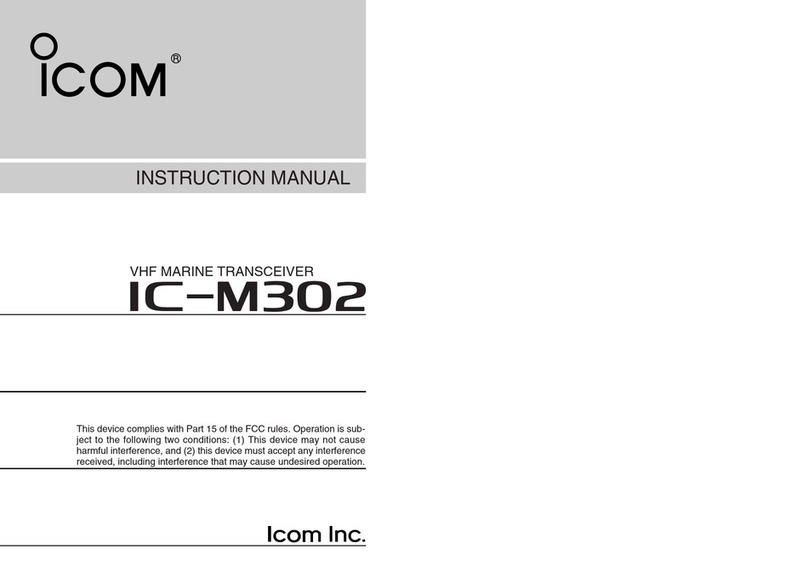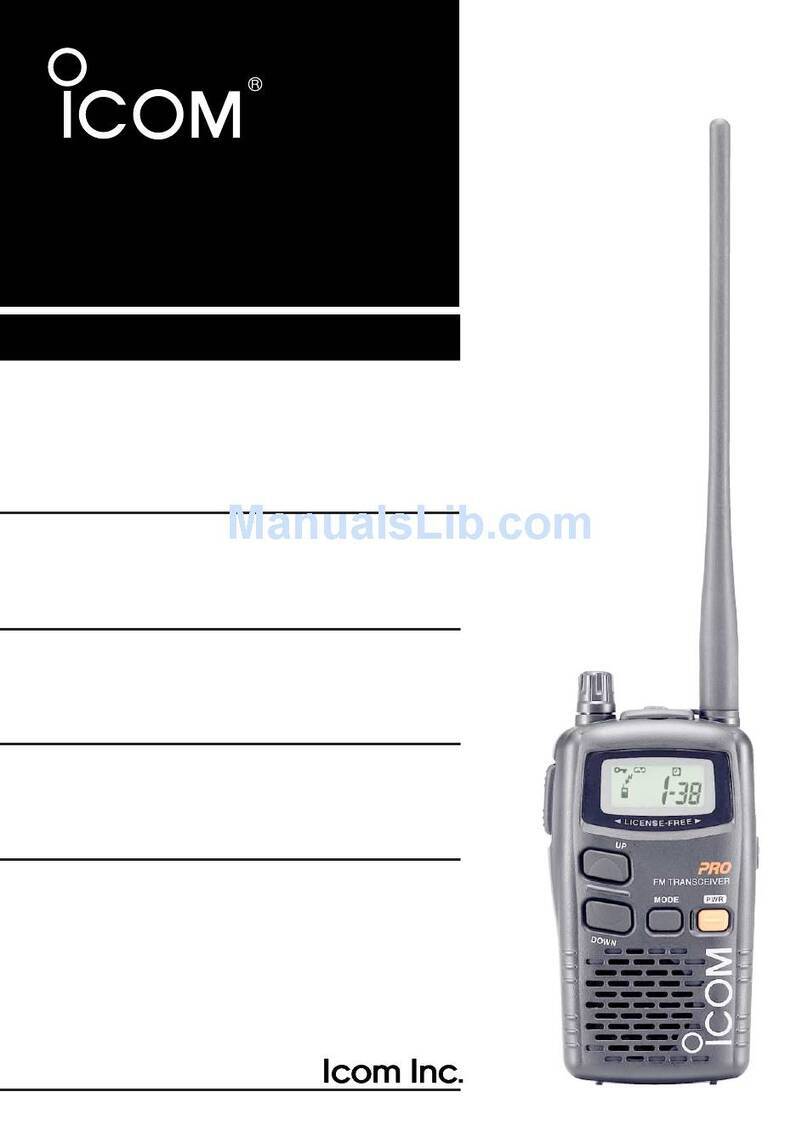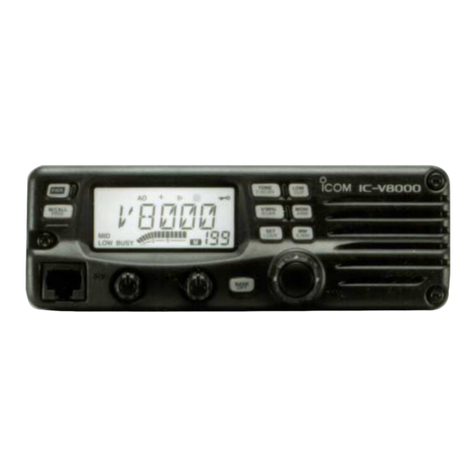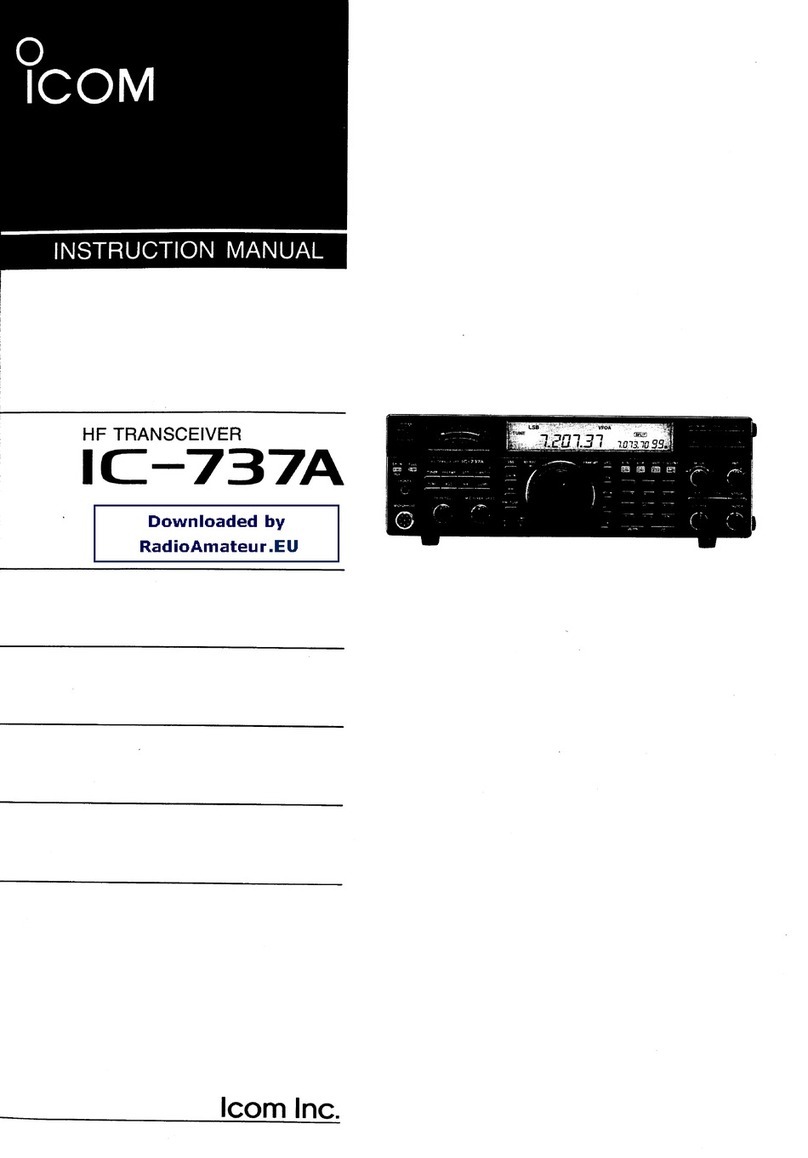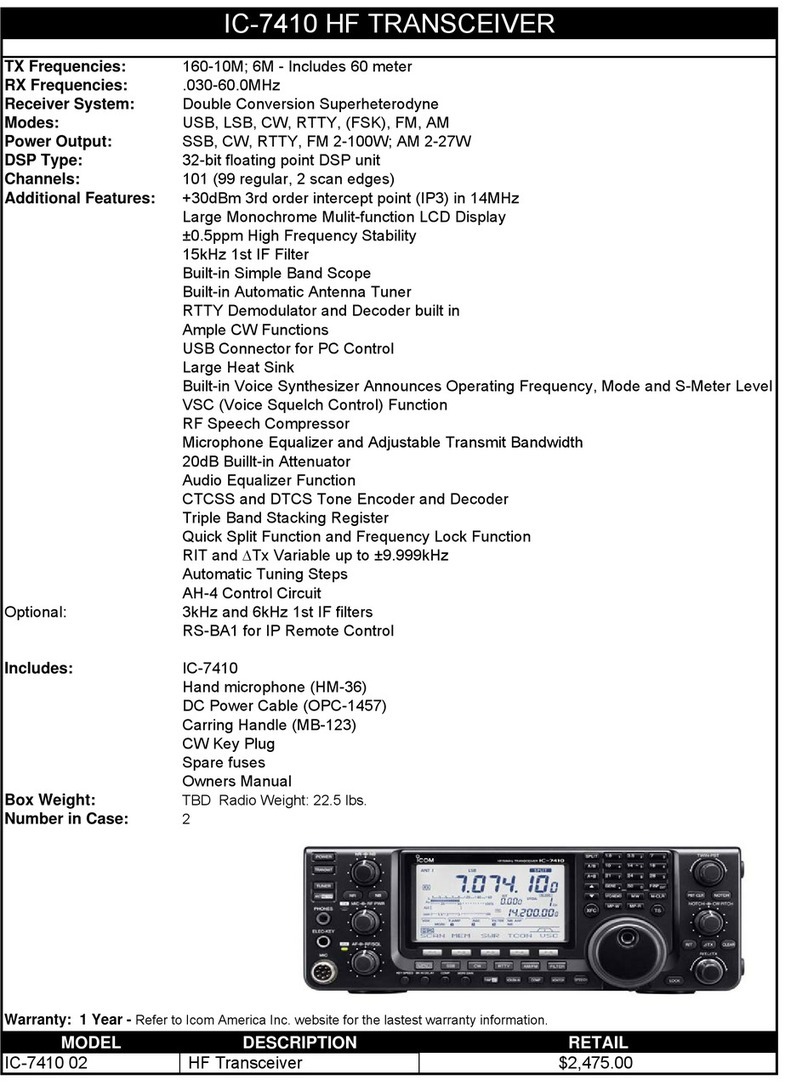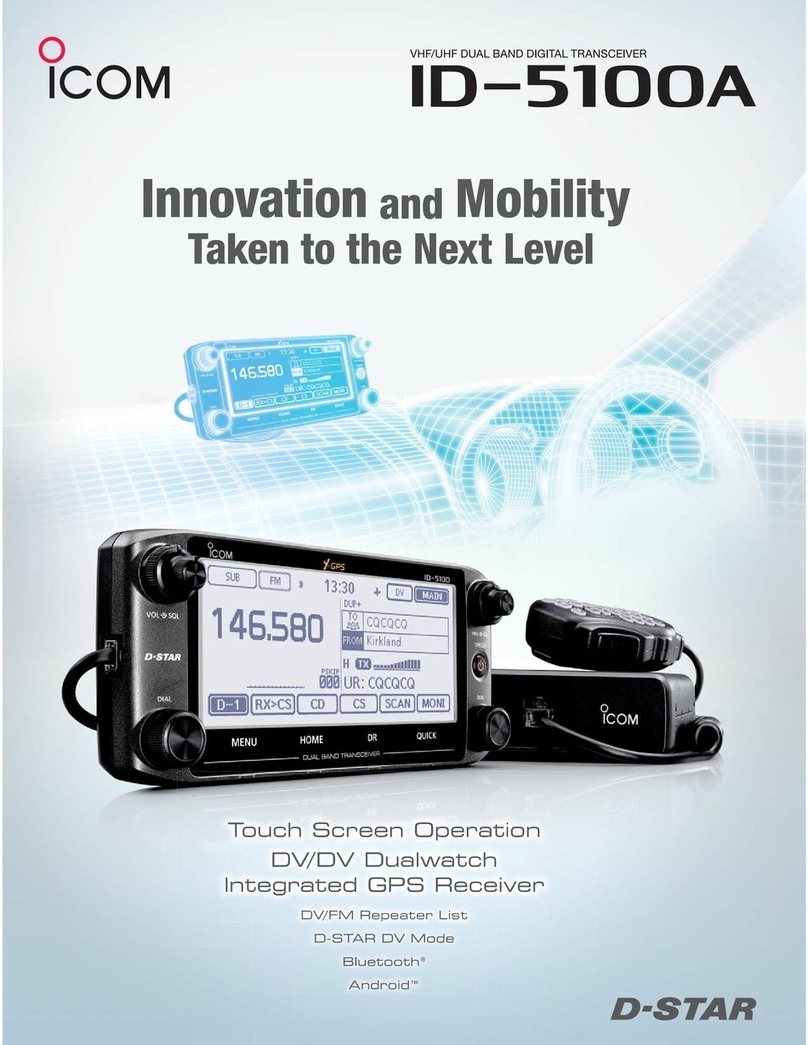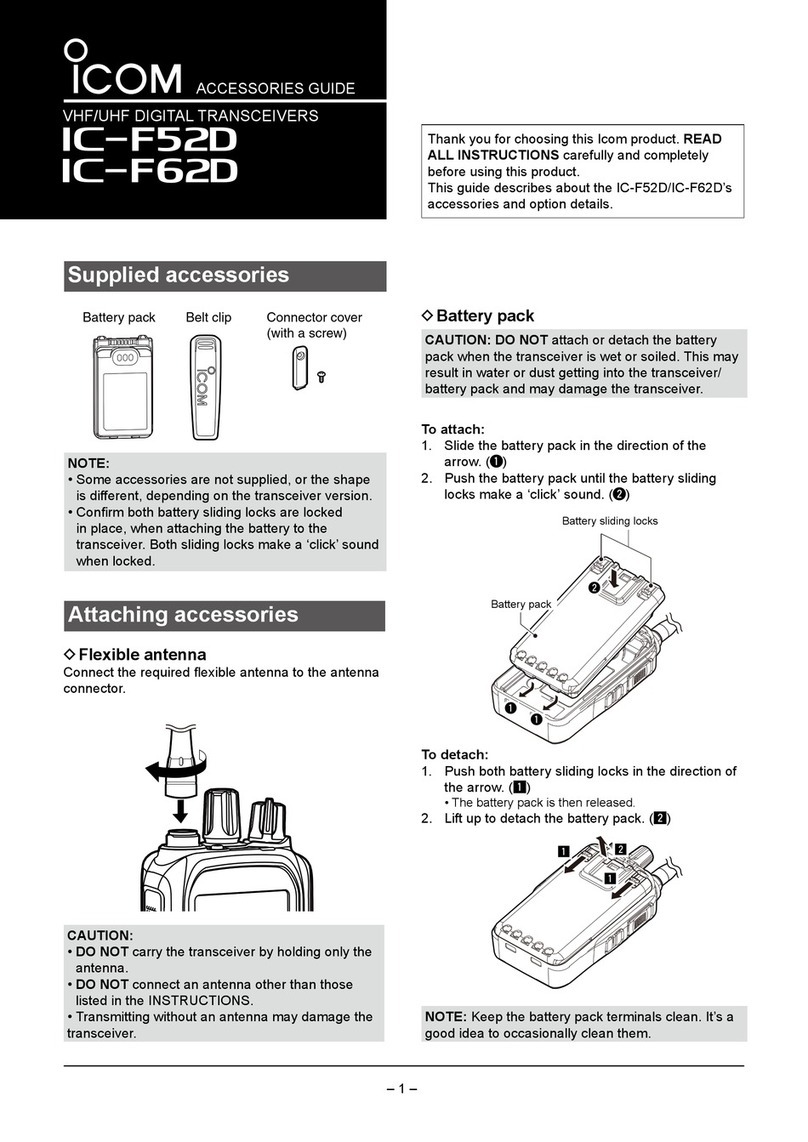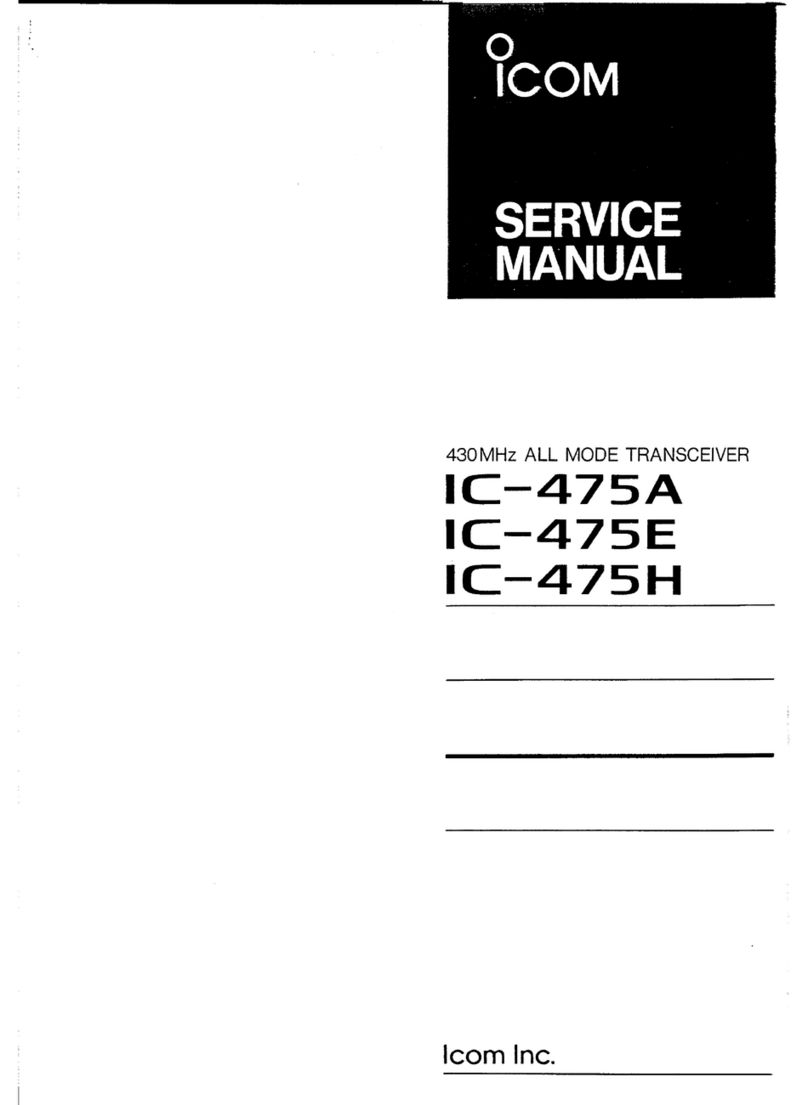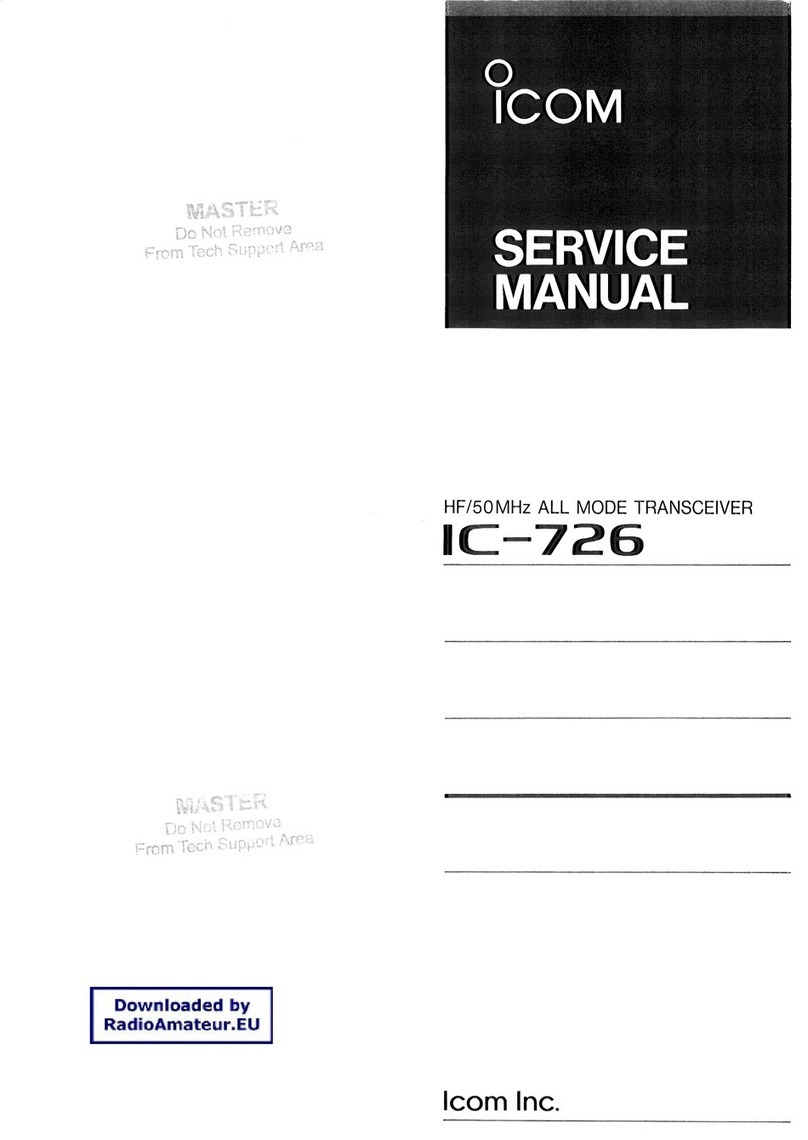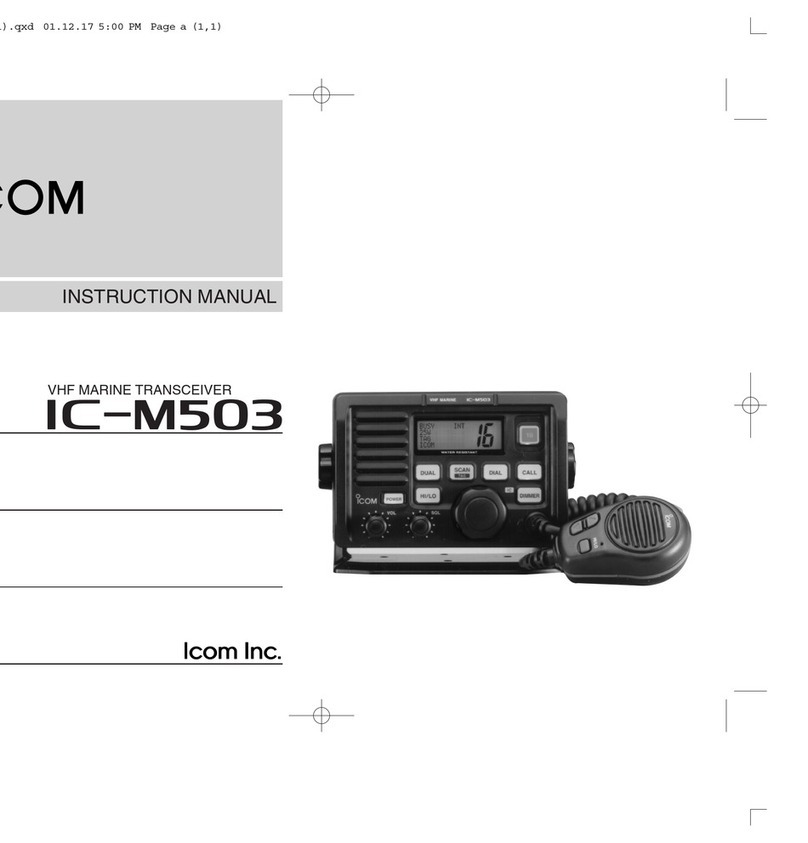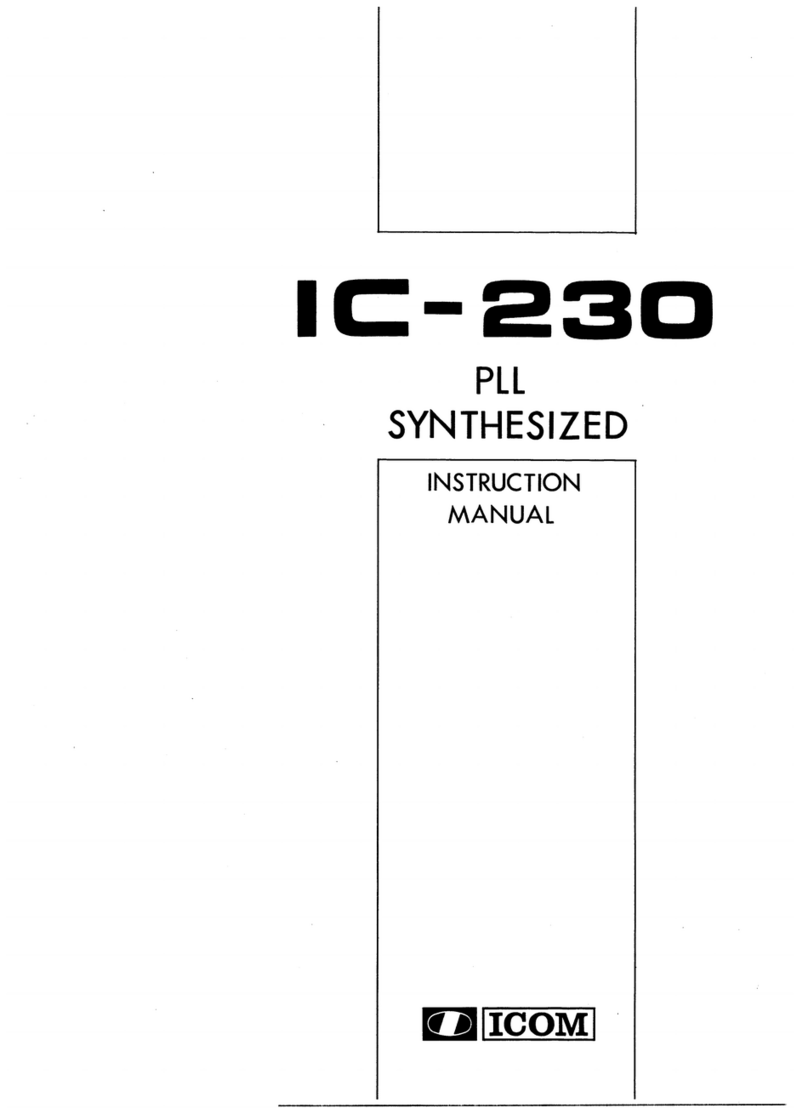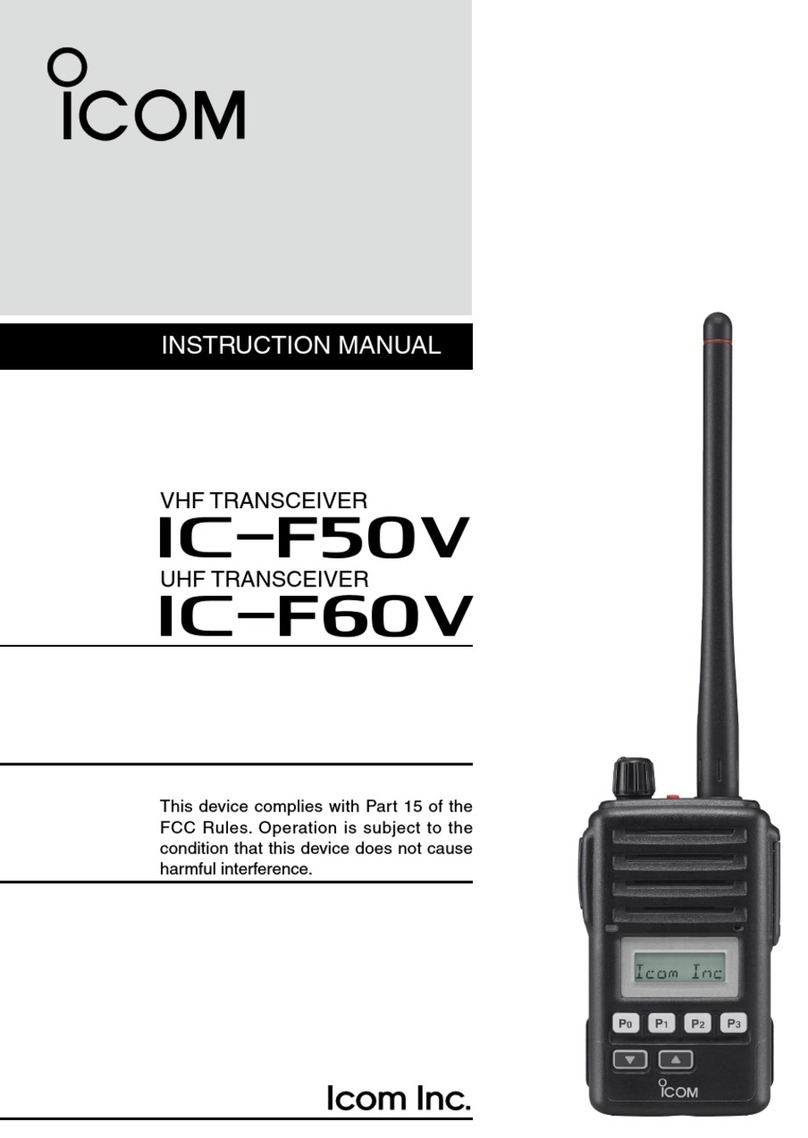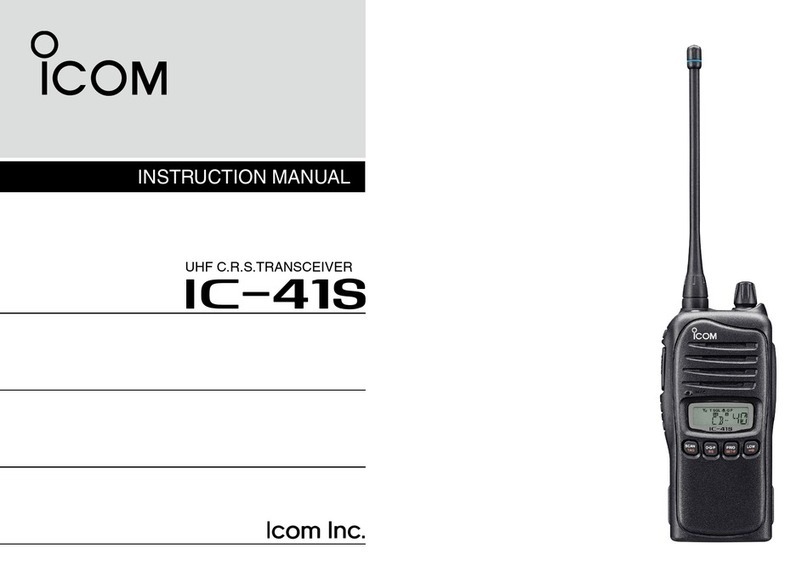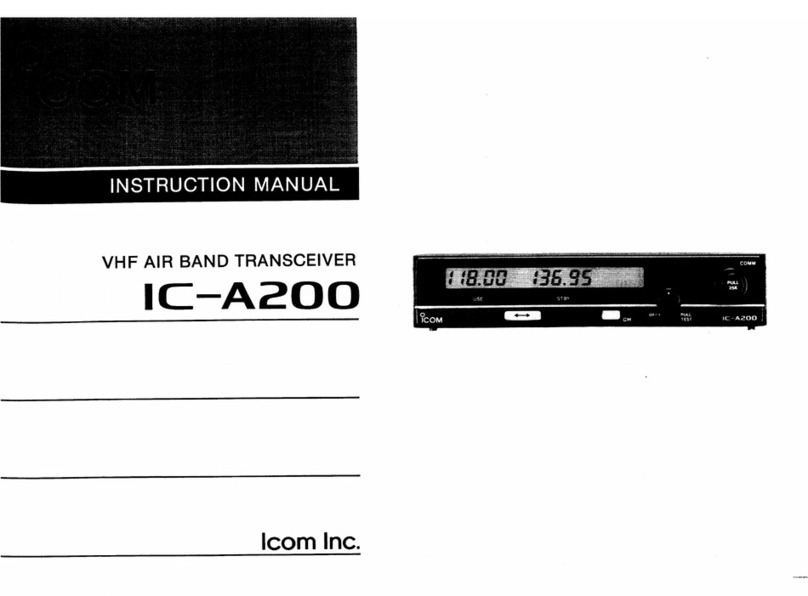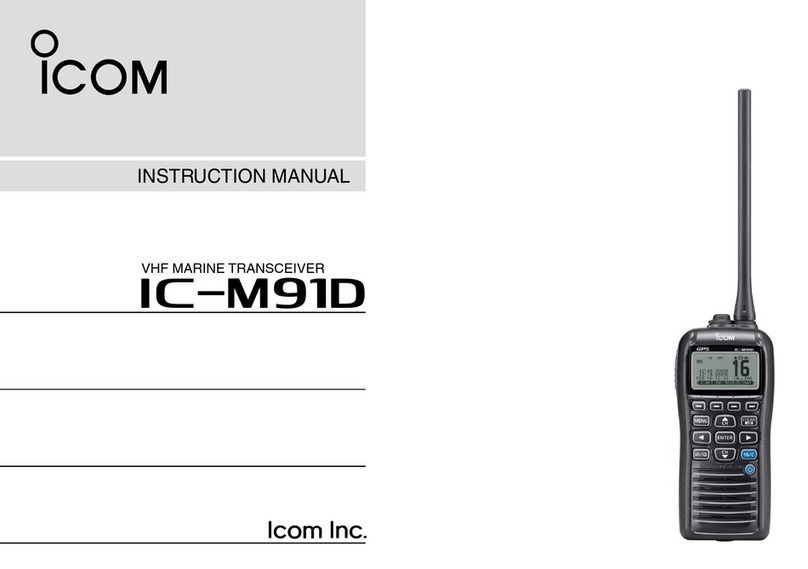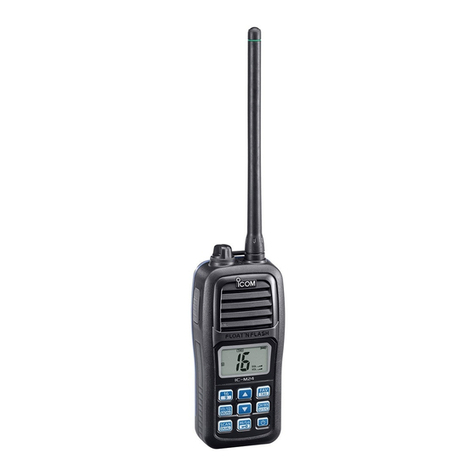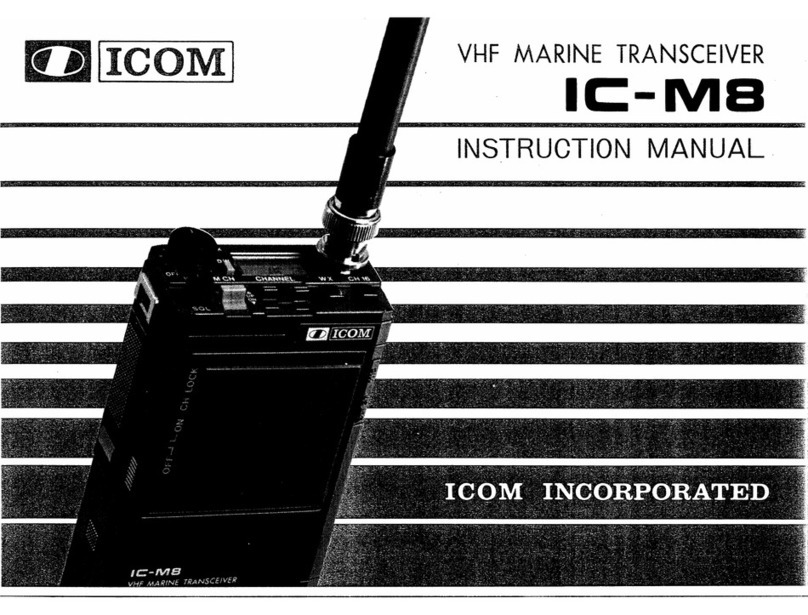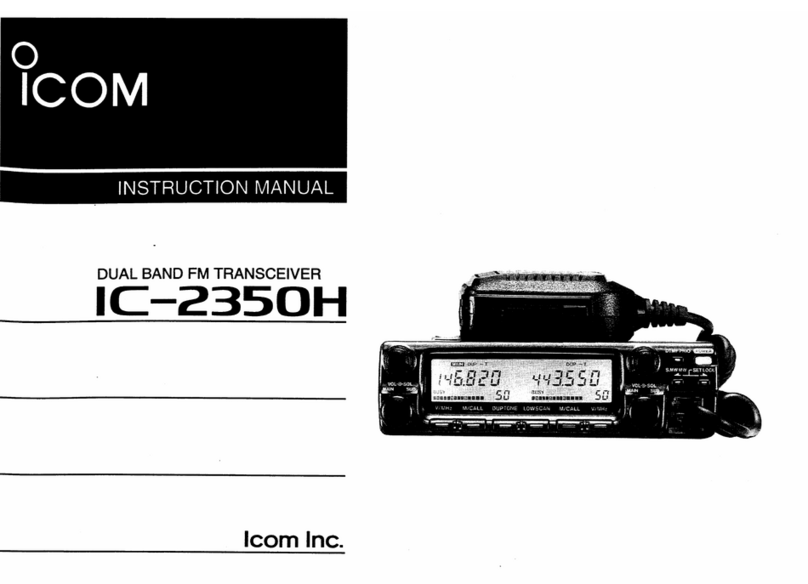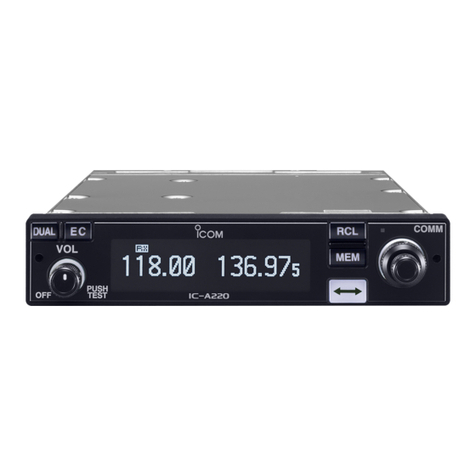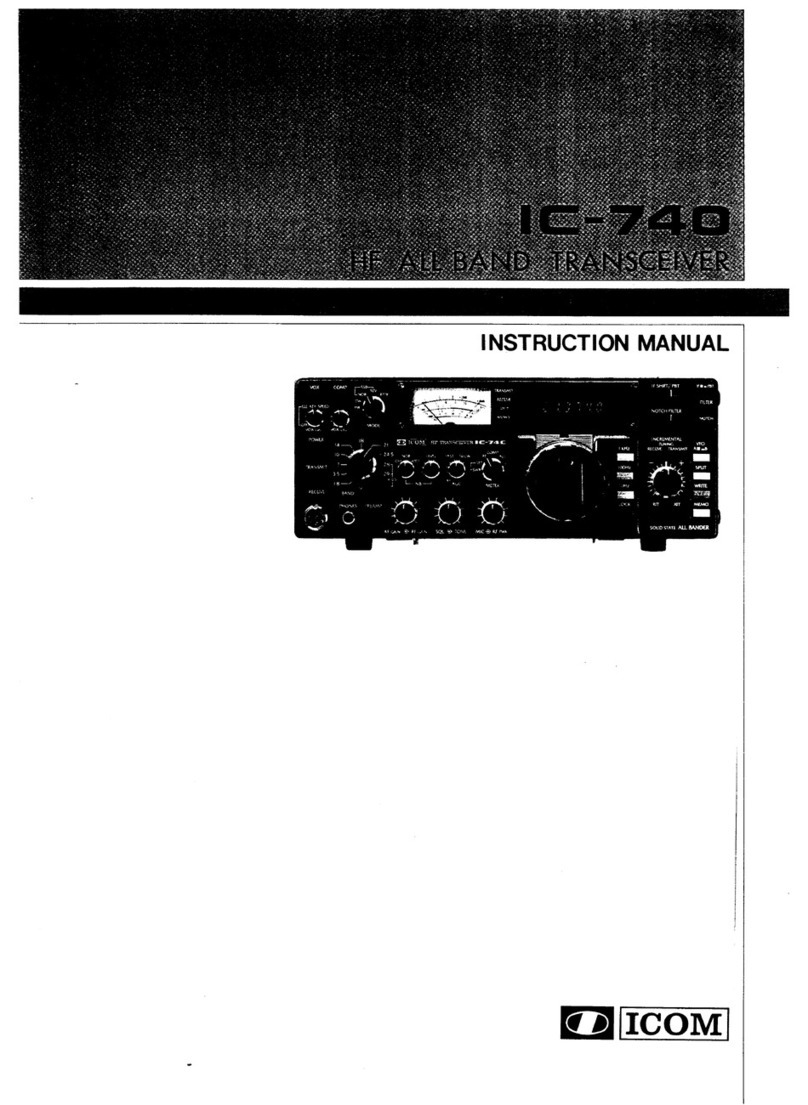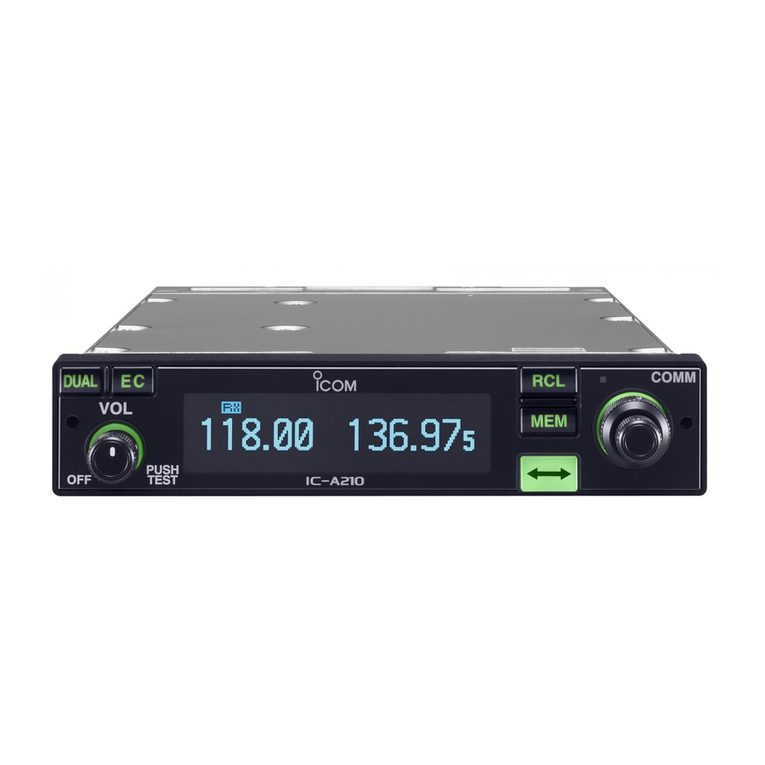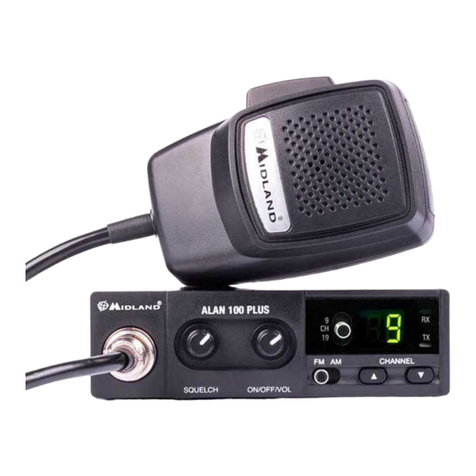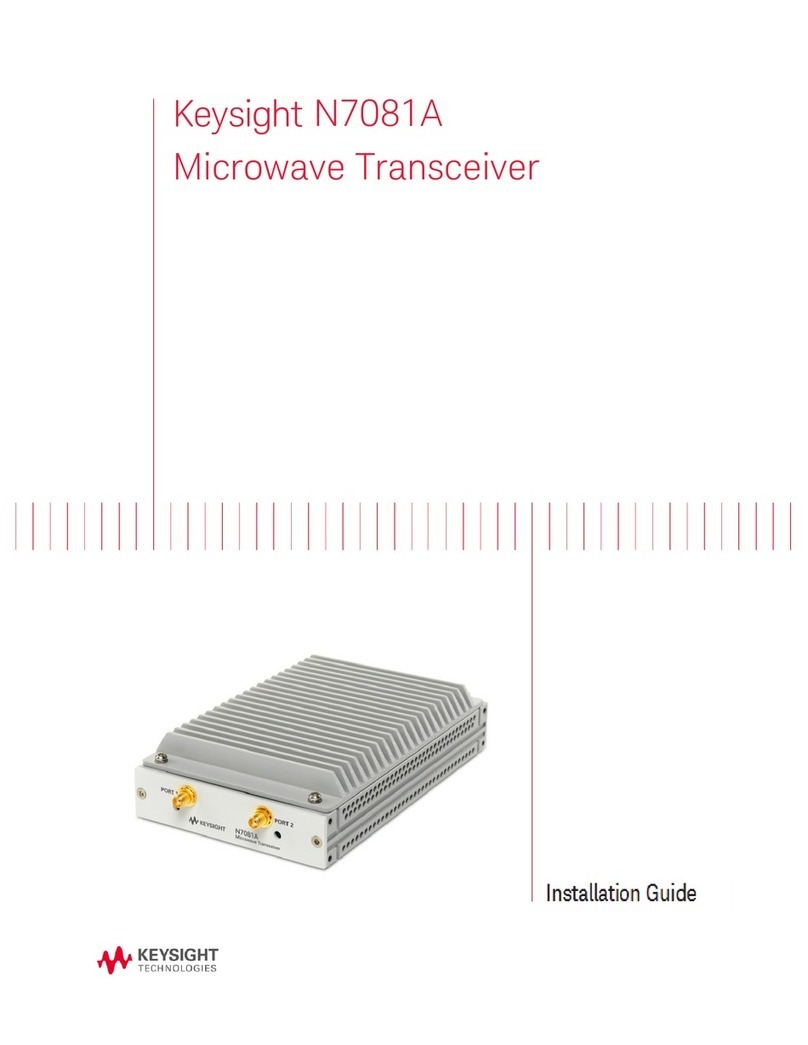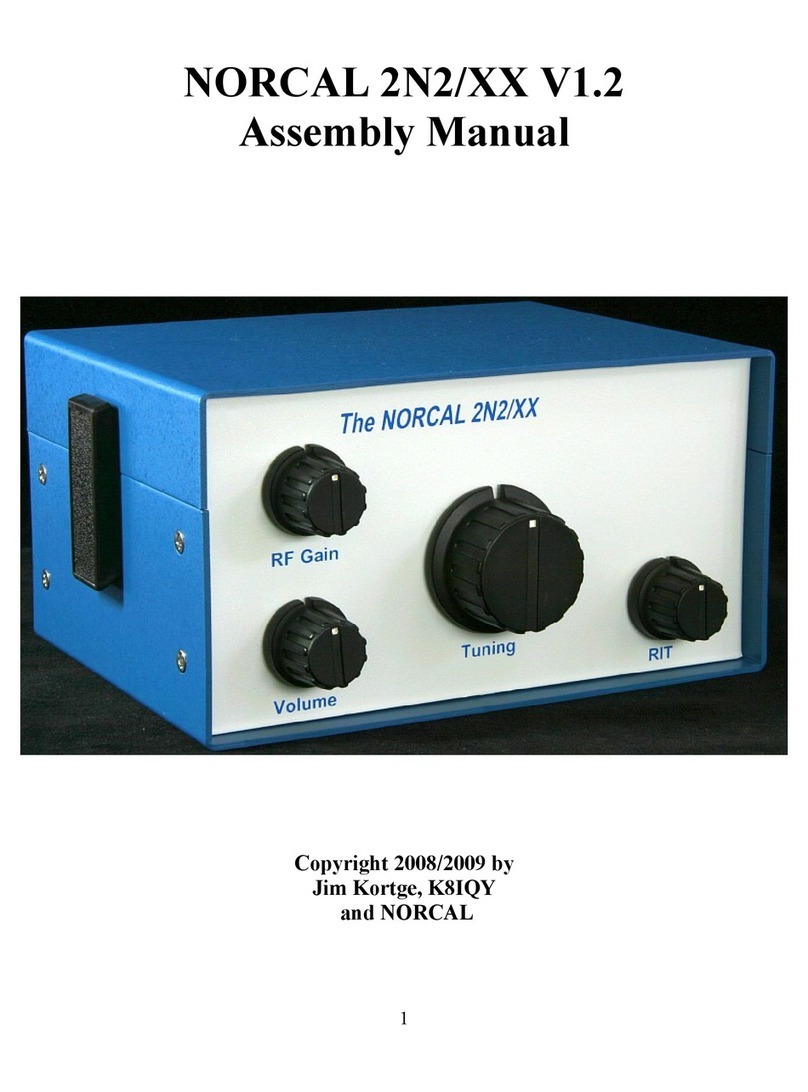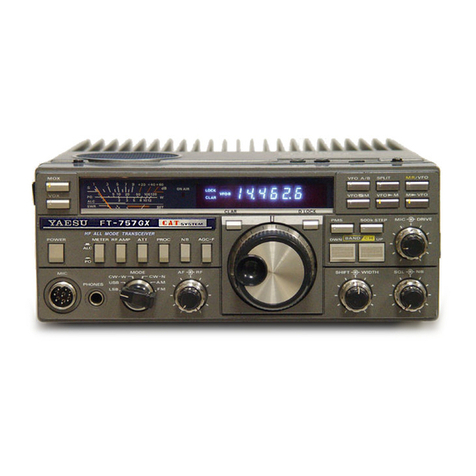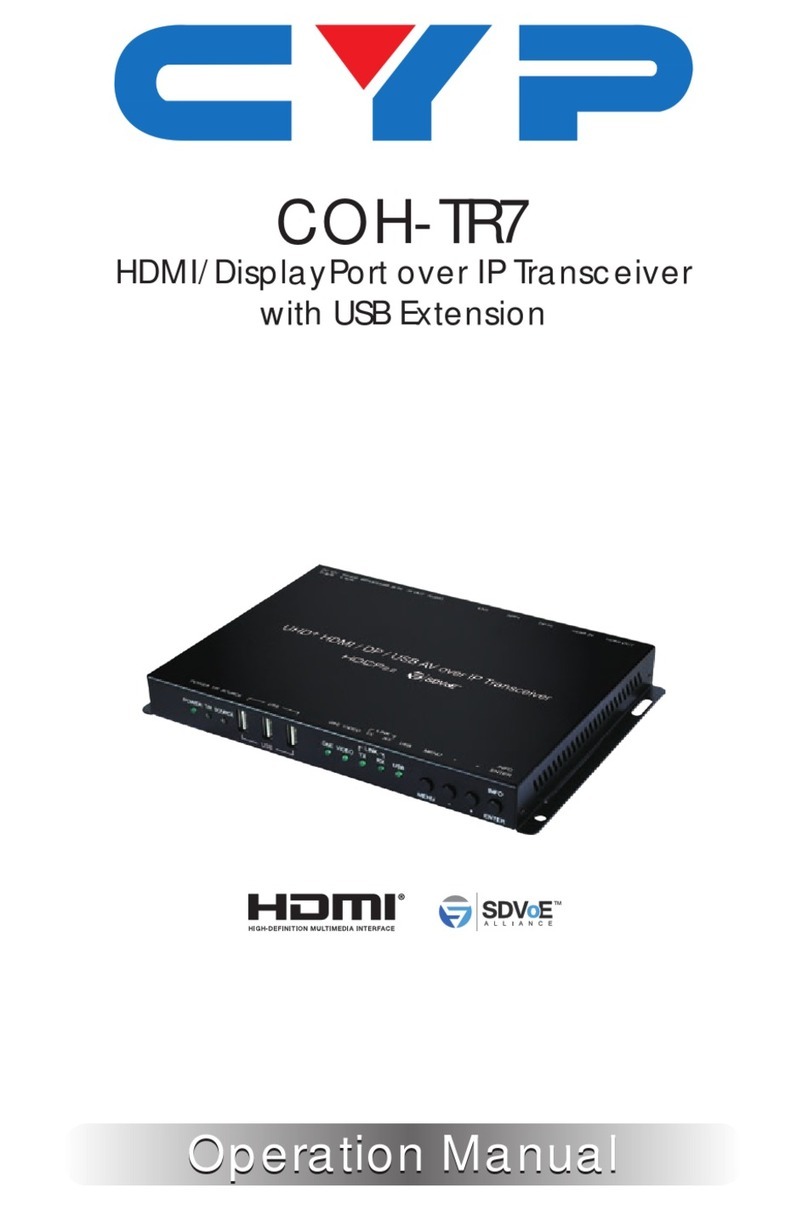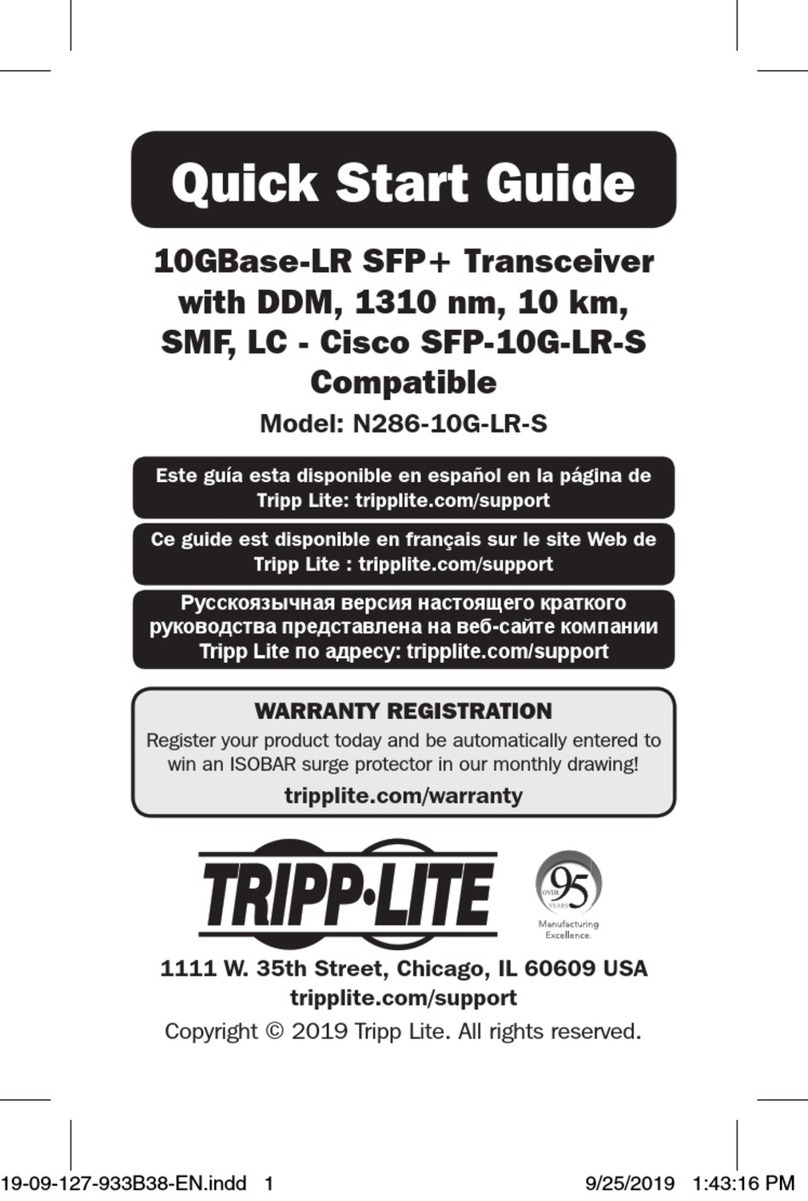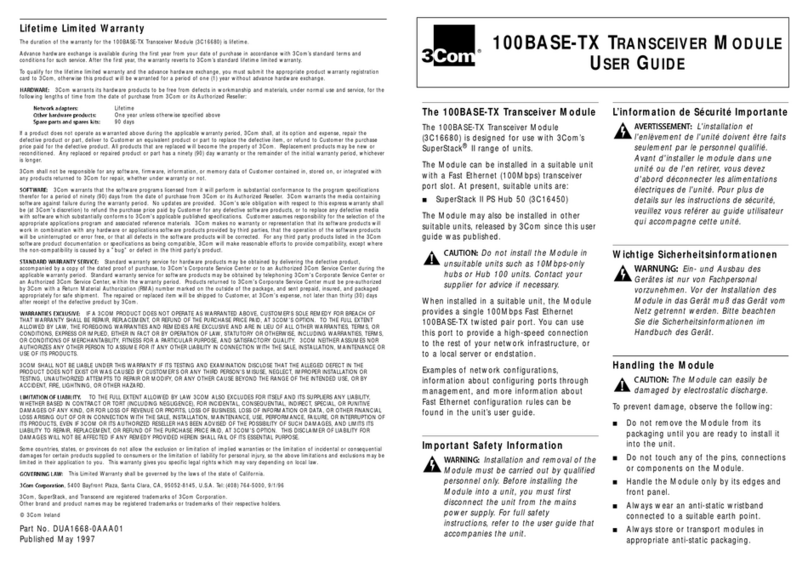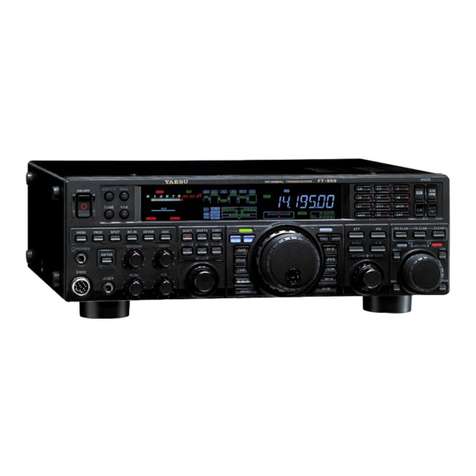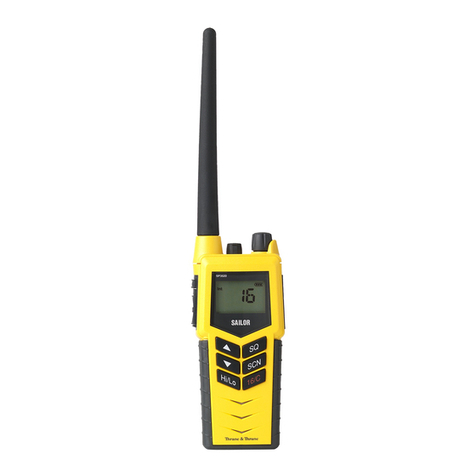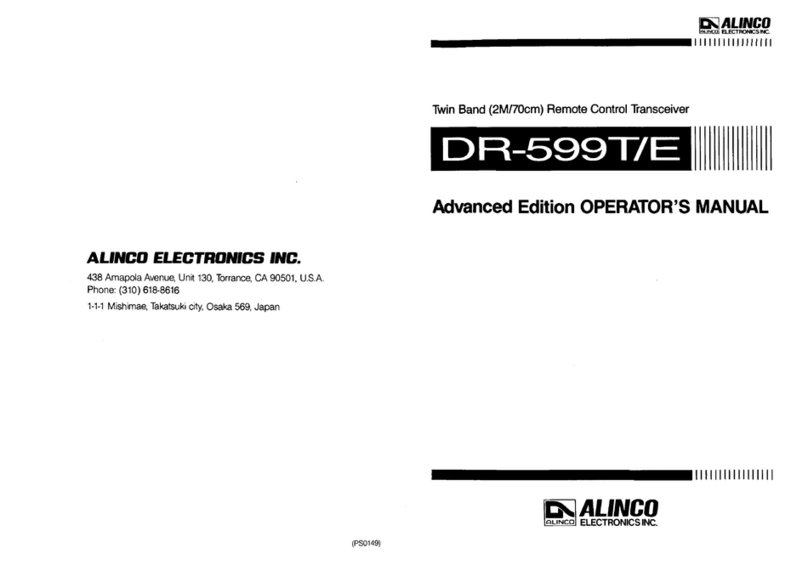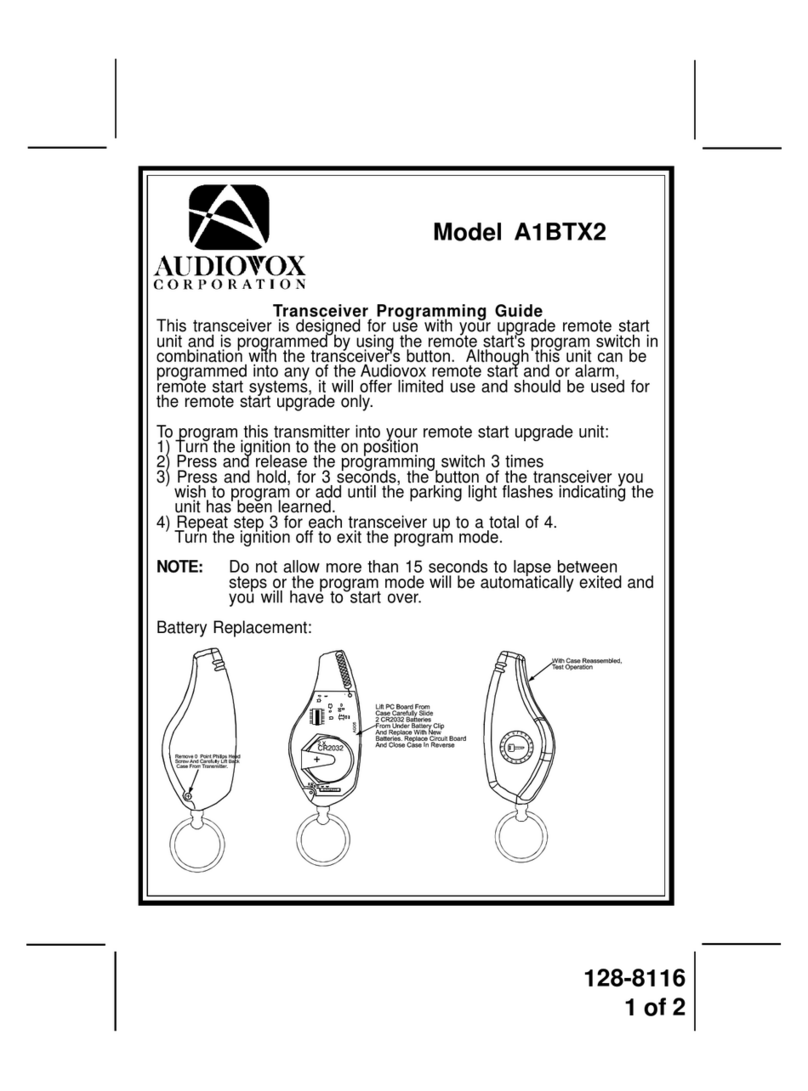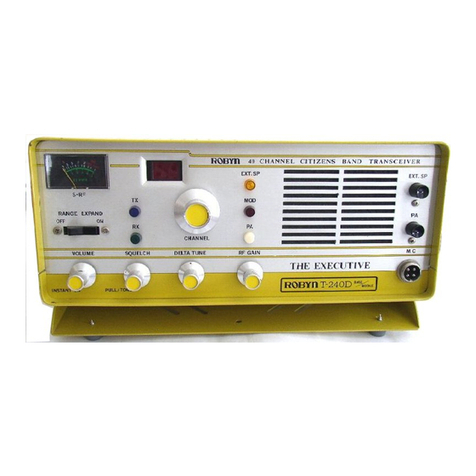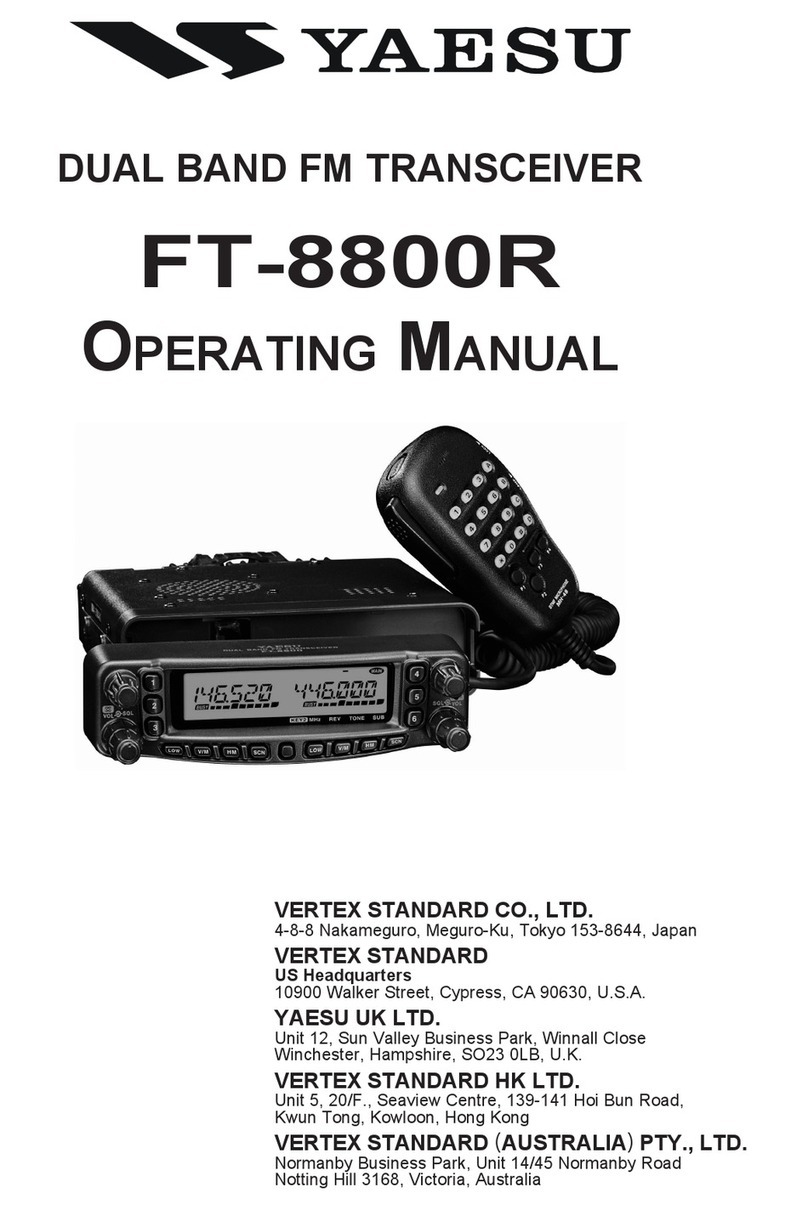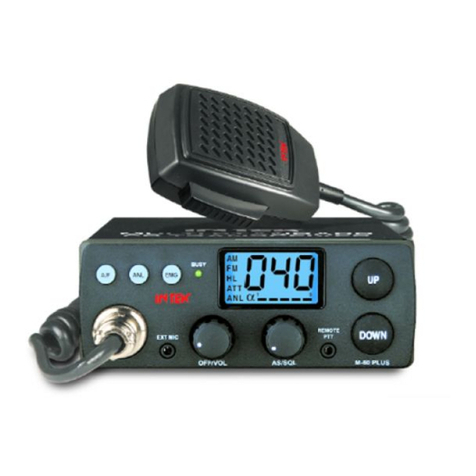Icom iDAS IC-iF3102D User manual

INSTRUCTION MANUAL
iF3103D
VHF dPMR HANDHELD TRANSCEIVER
iF3102D
The photo shows
the VHF transceiver.
iF4103D
UHF dPMR HANDHELD TRANSCEIVER
iF4102D

i
FOREWORD
Thank you for choosing this Icom product. This product is
designed and built with Icom’s state of the art technology and
craftsmanship. With proper care this product should provide you
with years of trouble-free operation.
READ ALL INSTRUCTIONS carefully and completely before
using the transceiver.
SAVE THIS INSTRUCTION MANUAL— This instruction
manual contains important operating instructions for the IC-F3102D,
IC-F3103D VHF dPMR HANDHELD TRANSCEIVERS and the IC-
F4102D, IC-F4103D UHF dPMR HANDHELD TRANSCEIVERS.
This instruction manual includes some functions which are us-
able only when they are preset by your dealer. Ask your dealer
for details.
EXPLICIT DEFINITIONS
WORD DEFINITION
RDANGER! Personal death, serious injury or an explo-
sion may occur.
RWARNING! Personal injury, fire hazard or electric shock
may occur.
CAUTION Equipment damage may occur.
NOTE
If disregarded, inconvenience only. No risk
of personal injury, fire or electric shock.

ii
Icom, Icom Inc. and Icom logo are registered trademarks of Icom Incorporated
(Japan) in Japan, the United States, the United Kingdom, Germany, France,
Spain, Russia, Australia, New Zealand, and/or other countries.
IDAS is trademark of Icom Incorporated (Japan).
dPMR and the dPMR logo are trademarks of the dPMR MoU Association.
All other products or brands are registered trademarks or trademarks of their re-
spective holders.
VOICE CODING TECHNOLOGY
The AMBE+2™ voice coding Technology embodied in this product
is protected by intellectual property rights including patent rights,
copyrights and trade secrets of Digital Voice Systems, Inc. This
voice coding Technology is licensed solely for use within this Com-
munications Equipment. The user of this Technology is explicitly
prohibited from attempting to extract, remove, decompile, reverse
engineer, or disassemble the Object Code, or in any other way
convert the Object Code into a human-readable form. U.S. Patent
Nos.
#5,870,405, #5,826,222, #5,754,974, #5,701,390, #5,715,365,
#5,649,050, #5,630,011, #5,581,656, #5,517,511, #5,491,772,
#5,247,579, #5,226,084 and #5,195,166.
Icom is not responsible for the destruction or damage to the Icom
transceiver, if the malfunction is because of:
• Force majeure, including, but not limited to, fires, earthquakes,
storms, floods, lightnings, or other natural disasters, disturbanc-
es, riots, war, or radioactive contamination.
• The use of Icom transceiver with any equipment that is not man-
ufactured or approved by Icom.

iii
PRECAUTIONS
RDANGER! NEVER short terminals of the battery pack. Also,
current may flow into nearby metal objects such as a necklace, so
be careful when placing battery packs (or the transceiver) in hand-
bags, etc. Simply carrying with or placing near metal objects such
as a necklace, etc. may cause shorting. This may damage not only
the battery pack, but also the transceiver.
RDANGER! Use and charge only specified Icom battery packs
with Icom transceivers or Icom chargers. Only Icom battery packs
are tested and approved for use with Icom transceivers or charged
with Icom chargers. Using third-party or counterfeit battery packs
or chargers may cause smoke, fire, or cause the battery to burst.
RWARNING! NEVER hold the transceiver so that the antenna
is very close to, or touching exposed parts of the body, especially
the face or eyes, while transmitting. The transceiver will perform
best if the microphone is 5 to 10 cm away from the lips and the
transceiver is vertical.
RWARNING! NEVER operate the transceiver with a headset
or other audio accessories at high volume levels. The continuous
high volume operation may cause a ringing in your ears. If you ex-
perience the ringing, reduce the volume level or discontinue use.
RWARNING! NEVER operate the transceiver while driving a
vehicle. Safe driving requires your full attention—anything less may
result in an accident.
CAUTION: MAKE SURE the flexible antenna, battery pack,
and jack cover are securely attached to the transceiver, and that
the antenna and battery pack are dry before attachment. Exposing
the inside of the transceiver to dust or water will result in serious
damage to the transceiver.

iv
PRECAUTIONS
DO NOT operate the transceiver near unshielded electrical blast-
ing caps or in an explosive atmosphere.
DO NOT push [PTT] when you do not actually intend to transmit.
DO NOT operate or place the transceiver in direct sunlight or in
areas with temperatures below –25°C or above +55°C.
DO NOT modify the transceiver. The specifications may change
and then not comply with the requirements of a corresponded
regulation. The transceiver warranty does not cover any problems
caused by unauthorized modification.
DO NOT use harsh solvents such as benzine or alcohol when
cleaning, as they will damage the transceiver surfaces.
BE CAREFUL! The transceiver will become hot when operating
it continuously for long periods of time.
KEEP the transceiver away from heavy rain, and never immerse
it in the water. The transceiver meets IP54* requirements for dust-
protection and splash resistance. However, once the transceiver
has been dropped, dust-protection and splash resistance cannot
be guaranteed because of possible damage to the transceiver’s
case or the waterproof seal.
* Only when the battery pack/case and jack cover are attached.
MAKE SURE to turn OFF the transceiver before connecting or
disconnecting the supplied or optional accessory.

v
TABLE OF CONTENTS
FOREWORD ........................................................................................ i
EXPLICIT DEFINITIONS...................................................................... i
VOICE CODING TECHNOLOGY ........................................................ ii
PRECAUTIONS.............................................................................. iii, iv
1 ACCESSORIES ......................................................................... 1–4
■Supplied accessories.................................................................. 1
■Accessory attachments .............................................................. 1
2 PANEL DESCRIPTION ............................................................ 5–13
■Front, top and side panels .......................................................... 5
■LED indicator .............................................................................. 7
■Programmable function keys .................................................... 10
3 BASIC OPERATION .............................................................. 14–26
■Turning ON the power............................................................... 14
■Channel selection ..................................................................... 15
■Call procedure .......................................................................... 16
■Receiving and transmitting ....................................................... 17
■Setting the microphone gain..................................................... 20
■Setting the squelch level........................................................... 21
■Setting the Beep level............................................................... 22
■Setting the Ringer level............................................................. 23
■Output power level selection..................................................... 24
■Priority A channel selection ...................................................... 24
■Lone Worker Emergency Call................................................... 25
■Emergency Call ........................................................................ 26

vi
1
2
3
4
5
6
7
8
9
10
11
12
13
14
15
16
17
18
19
20
4 dPMR OPERATION ............................................................... 27–32
■dPMR operation........................................................................ 27
■Receiving a call......................................................................... 28
■Transmitting a call ..................................................................... 30
■Position data transmission........................................................ 32
■Status message transmission................................................... 32
■Scrambler function.................................................................... 32
5 BATTERY CHARGING .......................................................... 33–43
■Caution (for the BP-264 ni-mh battery).................................... 33
■Caution (for the BP-265 Li-ion battery)................................... 35
■Battery chargers ....................................................................... 38
6 BATTERY CASE .......................................................................... 44
■Optional battery case (BP-263) ................................................ 44
7 OPTIONS ............................................................................... 45–50
■VOX function ............................................................................. 48
8 INFORMATION ............................................................................ 51
■Country code list....................................................................... 51
■Disposal.................................................................................... 52
TABLE OF CONTENTS

■Accessory attachments
DFlexible antenna
Connect the flexible antenna to the an-
tenna connector.
CAUTION:
• NEVER carry the transceiver by
holding the antenna.
• DO NOT
connect the antenna
other than listed above.
• Transmitting without an antenna will
damage the transceiver.
■Supplied accessories
The following accessories are supplied with the transceiver.
1
1ACCESSORIES
Battery pack*
Belt clip* Jack cover
(with screws)
Battery charger* Power adapter*
* Not supplied, or the shape is different, depending on the version.
Flexible antenna
(This illustration is for the VHF type.)

2
1
ACCESSORIES
1
2
3
4
5
6
7
8
9
10
11
12
13
14
15
16
17
18
19
20
DBelt clip
To attach the belt clip:
➥Slide the belt clip in the direction of the arrow until the belt clip
locks in place, and makes a ‘click’ sound.
Battery pack
Belt clip
To detach the belt clip:
qRemove the battery pack from the transceiver, if it is attached.
(p. 3)
wLift the tab up (q), and slide the belt clip in the direction of the
arrow (w).
w
q
Ta b

3
1ACCESSORIES
DBattery pack or case
To attach the battery pack or case:
q Fit the battery pack/case in the direction of the arrow, then close
it.
w Hook the latch until it makes a ‘click’ sound.
q
Latch
w
Battery pac
k/case
To remove the battery pack/case:
Be careful! The latch is tightly locked, so use caution when re-
leasing it. DO NOT use your finger nail. Use the edge of a coin
or screwdriver tip to carefully release it
.
qUnhook the latch.
wLift up the
battery pack/case
in the direction of the arrow.
q
w

4
1
ACCESSORIES
1
2
3
4
5
6
7
8
9
10
11
12
13
14
15
16
17
18
19
20
NEVER remove or attach the
battery pack/case
when the trans-
ceiver is wet or soiled. This may result in water or dust getting into
the transceiver,
battery pack/case,
and may result in them being
damaged.
NOTE: Keep the battery pack terminals clean. It’s a good idea to
occasionally clean them.
DJack cover
Attach the jack cover when the optional equipment is not used.
To attach the jack cover:
qAttach the jack cover to the
[SP MIC] jack.
wTighten the screws.
To detach the jack cover:
qRemove the screws with a
phillips screwdriver.
wDetach the jack cover to con-
nect the optional equipment.
w
w
w
q
q
q

5
2PANEL DESCRIPTION
■Front, top and side panels
Microphone
Speaker
r
w
e
q
y
u
i
t
LOWER KEY
UPPER KEY
PTT SWITCH
ANTENNA
CONNECTOR
ROTARY
SELECTOR
LED INDICATO
R
VOLUME
CONTROL
SPEAKER-
MICROPHONE
JACK
qROTARY SELECTOR
Rotate to select the pre-programmed memory channels or scan
lists, depending on the pre-programming.
wVOLUME CONTROL [VOL]
Rotate to turn the power ON or OFF, and adjust the audio level.

6
2
PANEL DESCRIPTION
eLED INDICATOR (pp. 7–9)
➥Lights red* while transmitting.
*When the optional battery case is attached, the LED indicator
lights orange.
➥Lights green while receiving a signal, or when the squelch is
open.
➥Lights/blinks orange when the matched 2/5-tone code is re-
ceived, depending on the presetting.
See pages 7–9 for details.
rSPEAKER-MICROPHONE JACK [SP MIC]
Connect the optional speaker-microphone or VOX adapter
cable.
tLOWER KEY [Lower]
yUPPER KEY [Upper]
The desired function can be assigned by your dealer. (p. 10)
uPTT SWITCH [PTT]
Hold down to transmit; release to receive.
iANTENNA CONNECTOR
Connect the antenna.
1
2
3
4
5
6
7
8
9
10
11
12
13
14
15
16
17
18
19
20
Jack cover
NOTE: Attach the jack cover
when the optional equipment
is not used. (p. 4)

7
2PANEL DESCRIPTION
■LED indicator
The LED indicator indicates the status of various
parameters of the transceiver as follows;
(Reference: R=Red, G=Green, O=Orange)
* Lights (or blinks) orange when the optional battery case is attached.
• TX: Lights Red while transmitting a signal.
R*
• RX busy: In the Analog CH, lights Green while in the noise squelch
opens. In the Digital CH or Mixed CH, lights Green while
detecting a frame synchronization.
G
• Call LED: Turns ON while receiving a matched 2/5-tone, or receiv-
ing Status or SDM call.
O
• Call LED: Blinks while receiving a matched 2/5-tone, or receiving
Status or SDM call.
O O
• Call LED: Blinks while waiting an acknowledgement.
O O O
O O O
• Success: Blinks slowly when your call was successful.
O G
• Call error: Blinks slowly when your call failed, or it was refused.
O R

8
2
PANEL DESCRIPTION
1
2
3
4
5
6
7
8
9
10
11
12
13
14
15
16
17
18
19
20
* Lights (or blinks) orange when the optional battery case is attached.
• Audible: Blinks slowly while in the audible mode after an acknowl-
edgement is received.
O
O
• Fast/Slow scan or voting:
Blinks when the Fast/Slow scan or voting is activated.
G G
• Low Battery 1: You should charge the battery. (Slowly blinks.)
G G
• Low Battery 2: You must charge the battery. (Fast blinks.)
G G G G
• TX low Battery 1: Low Battery was detected during TX mode.
R* R*
• TX low Battery 2: Very Low Battery was detected during TX mode.
R* R* R* R*
• Channel Error: Blinks when a non-programmed channel is se-
lected.
R O R O R O R O R O R O R O R O
• Power ON: Blinks at the transceiver starts up.
R O GRO G
• TX inhibit: While in the TX inhibit mode such as the TOT or Lock-
out function is activated.
R O O O

9
2PANEL DESCRIPTION
• Emergency: Blinks when an Emergency call was received (Status
or SDM call).
G O R G O R G O R G O R
• Emergency Locator Ringer Siren:
Blinks while in the Emergency locator, Ringer or Siren is acti-
vated.
G O R G O R G O R G O R
■LED indicator (Continued)

10
2
PANEL DESCRIPTION
1
2
3
4
5
6
7
8
9
10
11
12
13
14
15
16
17
18
19
20
■Programmable function keys
The following functions can be assigned to the [Upper] and [Lower]
programmable function keys.
Consult your Icom dealer or system operator for details concerning
your transceiver’s programming.
SCAN
Push to start and cancel the scanning operation.
• When the scan started with the Power ON Scan or Auto Scan func-
tion, push to pause the scanning operation. The paused scan re-
sumes after the specified time period has passed.
PRIORITY A CHANNEL, PRIORITY B CHANNEL
Push to select the Priority A or Priority B channel.
PRIORITY A CHANNEL (REWRITE),
PRIORITY B CHANNEL (REWRITE)
➥Push to select the Priority A or Priority B channel.
➥Hold down [Prio A (Rewrite)] or [Prio B (Rewrite)] for 1 second to
assign the operating channel to Priority A or Priority B channel,
respectively.
MEMORY CHANNELS 1, 2, 3, 4
Push to directly select memory channel 1, 2, 3 or 4, if programmed.
Consult your dealer for details.
LONE WORKER (p. 25)
➥Hold down to turn ON the Lone Worker function.
➥Push to turn OFF the Lone Worker function.
• When the Lone Worker function is turned ON, and no operation is
performed for the specified time period, the Emergency function is
automatically turned ON.

11
2PANEL DESCRIPTION
MONITOR, MONITOR (AUDIBLE)
➥Push to turn the CTCSS (DTCS) or 2/5-tone squelch Mute ON
or OFF.
• Only during LMR operation, push to open any squelch func-
tions, or deactivate any mute functions.
• Only during PMR operation, push to activate one or two of the
following functions* on each channel.
- Hold down to un-mute the channel (Audible mode).
- Push to mute the channel (Inaudible mode).
- Push to send a ‘reset code’ after the communication is finished.
*Ask your dealer for details.
NOTE: The un-mute condition may automatically return to
the mute condition, after a specified time period.
➥
Depending on the presetting, holding down this key for 1 sec-
ond cancels a scan.
LOCK
Hold down to electronically lock all programmable keys except
[Moni(Audi)], [Call] (including Call A and Call B), [Emergency],
Surveillance] and [Lone Worker].
HIGH/LOW (p. 24)
Select the transmit output power level temporarily or permanently,
depending on the presetting.
• Ask your dealer for the output power level for each selection.
TALK AROUND
➥Hold down to turn ON the Talk Around function.
➥Push to turn OFF the Talk Around function.
• The Talk Around function equalizes the transmit frequency to the
receive frequency for transceiver-to-transceiver communication.
■Programmed function keys (Continued)

12
2
PANEL DESCRIPTION
DTMF AUTODIAL
Push to transmit a programmed DTMF code.
WIDE/NARROW
Push to toggle the IF bandwidth between Wide, Mid* or Narrow.
* Depending on the presetting, Mid channel width may not be se-
lectable. Ask your dealer for details.
CALL, CALL A, CALL B
Push to transmit a 2/5-tone code.
• Tone call transmission may be necessary before you call another sta-
tion, depending on your signalling system.
• [Call A] and/or [Call B] keys may be available when your system em-
ploys selective ‘Individual/Group’ calls. Ask your dealer which call is
assigned to each key.
EMERGENCY
Hold down for specified time period to transmit an emergency call.
• The emergency call transmits with beeps, and the LED lights red.
• The transceiver can transmit an emergency call without the beep
sounding and the LED indicator lighting. Ask your dealer for details.
• If you want to cancel the emergency call, hold down the key again
before transmitting the call.
• The emergency call is transmitted one time only, or repeatedly until re-
ceiving an acknowledgement signal, or until the power is turned OFF.
When a matched 5-tone code signal is received, the emergency func-
tion can be cancelled depending on the presetting. (PMR operation
only)
SURVEILLANCE
➥Hold down to turn ON the Surveillance function.
➥Push to turn OFF the Surveillance function.
• When this function is turned ON, the beep is not heard and the LED
does not light when a signal is received, or a key is pushed.
1
2
3
4
5
6
7
8
9
10
11
12
13
14
15
16
17
18
19
20

SIREN
Hold down for 1 second to emit a siren sound.
This function can be used for situations other than an emergency
alert, such as a security alarm for example.
The transceiver emits the siren sound until the power is turned
OFF.
SCRAMBLER
➥Hold down to turn ON the Voice Scrambler function while operat-
ing in the digital mode.
➥Push to turn OFF the Voice Scrambler function.
ANNOUNCE
Push to turn the Channel Announce function ON or OFF.
• When this function is turned ON, the transceiver announces the posi-
tion of [ROTARY SELECTOR] between 1 and 16 when rotating [RO-
TARY SELECTOR] to a desired scale.
13
2PANEL DESCRIPTION
■LED indicator (Continued)
This manual suits for next models
3
Table of contents
Other Icom Transceiver manuals
